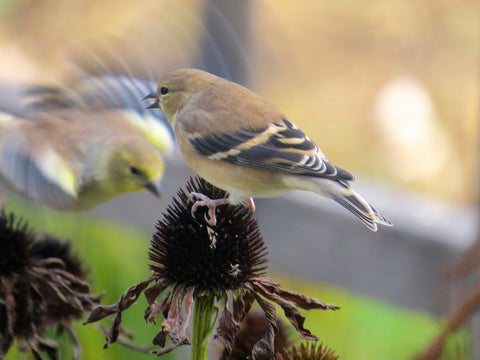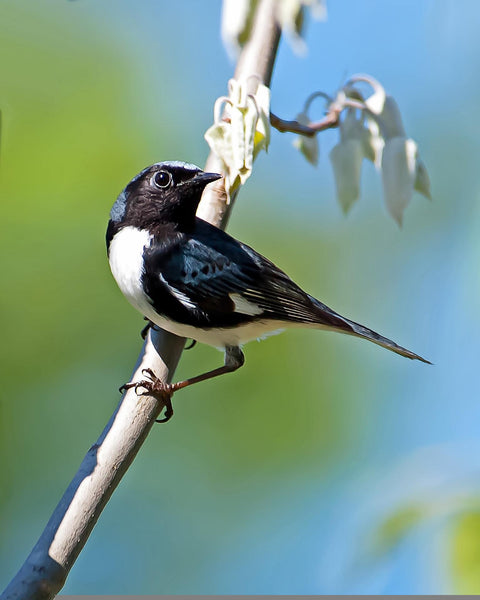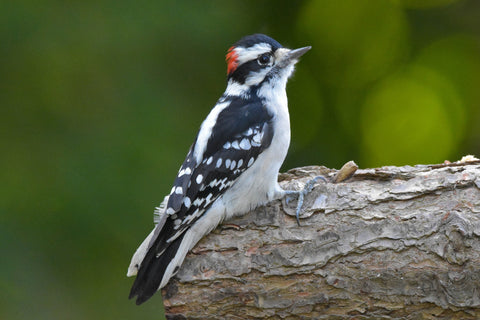Our wild bird population has decreased by 20-78% over the last few decades. Factors contributing to this decline are deforestation for urbanization and agriculture, use of pesticides and herbicides, practices used to maintain visibility on roadways and powerlines, a desire to maintain large areas of turf and poor choices in landscaping with non-native species.
Dr. Doug Tallamy begins his speeches with a slide of a beautifully landscaped house with a large freshly mowed yard and simply states ‘nothing lives here.’
So, what can we plant to help our bird population?
- Natives, which are food for insect larvae and are consumed by 96% of nestlings.
- Natives that produce fruits containing lipids for long migratory treks.
- Natives have developed and maintained our diverse bird species with habitat for nesting for centuries.
Native plants provide all these qualities while non-natives do not. Let us discuss 4 natives that would work in all landscapes.
1. Viburnum prunifolium, or Blackhaw,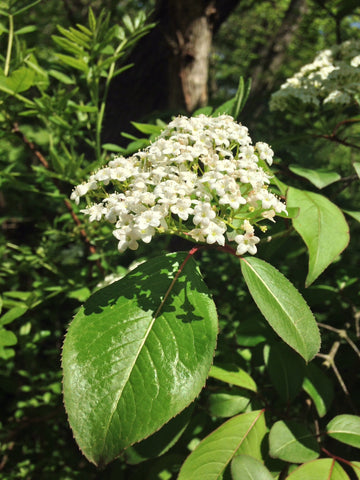 is a large shrub or small tree which can grow to 15-25 feet wide by twenty feet tall. Viburnum prunifolium prefers part shade to full sun with adequate moisture in the soil. Drought will cause fruit-producing plants to throw fruit prior to becoming ripe if water is not available for proper production. The twiggy growth makes predation tough on nestlings, the lipid content of the fruits helps birds with needed energy for their migration, and the larvae that feed on the plant are food for nestlings.
is a large shrub or small tree which can grow to 15-25 feet wide by twenty feet tall. Viburnum prunifolium prefers part shade to full sun with adequate moisture in the soil. Drought will cause fruit-producing plants to throw fruit prior to becoming ripe if water is not available for proper production. The twiggy growth makes predation tough on nestlings, the lipid content of the fruits helps birds with needed energy for their migration, and the larvae that feed on the plant are food for nestlings.
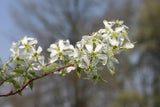
2. Amelanchier canadensis, or Serviceberry, is a powerhouse as it too produces berries for migration, nesting sites, and the larva that feed on it in late spring are food for nestlings. This small tree or multi-stemmed shrub grows 15-18 tall by twelve feet wide in part shade. This native develops excellent fall coloration in your garden.
3. Callicarpa americana, or native Beautyberry, develops clusters of deep
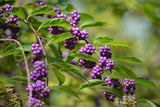
purple berries devoured by Waxwings, Chickadees, Catbirds, Finches, Thrashers, and Mockingbirds. A part shade to full sun shrub prefers loamy organic soils and moisture especially when fruiting. The berries provide lipids which birds need for their migration. This shrub can grow to eight feet by eight feet and is hardy zones 6-10.

4. The most important native trees for nesting birds are Oak trees. Oaks migrated when birds especially Blue Jays and mammals ate the seeds and then deposited them in their travels. Oaks provide habitat for nests, are host to over five hundred species of caterpillars, feed over one hundred animal species, and when dead stand for years and provide for over twenty cavity-nesting birds. White and Red Oaks are powerhouses in acorn production with white oaks producing yearly and red bi-annually. Deer moved from the forest into urban areas once we had harvested oaks for lumber and depleted their habitat.
Birds that frequent Oaks number over two hundred species with Tanagers and Warblers leading the way by nesting, feeding, and utilizing trees for years. The acorns are winter food for Blue Jays, Pileated Woodpeckers, Yellow Shafted Flickers, Red-Headed Woodpeckers, Red Bellied Woodpeckers, Acorn Woodpeckers, Wood Ducks, Wild Turkeys, and others. Smaller birds hunt the duff around Oak trees eating pieces of acorns and scratching for ground larvae during winter. These include the Rufus-Sided Towhee, Titmice, Chickadees, and multiple Sparrow species.
These are some of the natives that should be in our landscapes so that we will
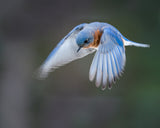
continue to be able to view our songbird species, birds of prey, and terrestrial game birds.
There are plenty of natives that provide for diversity and habitat that can work well in landscapes, so do your research, and avoid planting non-native species, so that you will enjoy a living garden that makes our planet healthier and sustainable for all.

